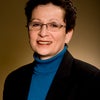I recently had the opportunity to speak about scientific women through history at my mother's alma mater -- the State University of New York, Oswego. My hosts told me about an exciting first of which I was unaware -- the first female Commissioner of Patents at the U.S. Patent and Trademark Office is one of their alums -- Peggy La Tulip Focarino. Although women in the U.S. couldn't get patents in their own names until 1809, many women now get patents for their ideas each year. Match the following women, all of whom have been inducted into the National Women's Hall of Fame, with her contribution:
____ 1. This Nobel Laureate was determined to develop pharmaceutical drugs after watching her beloved grandfather die slowly and painfully from stomach cancer.
____ 2. Intending to go to medical school, her research in polymers was so interesting to her, that she stayed at DuPont throughout her 40-year career.
____ 3. The founder of the Society of Women Engineers, her gas density sensor is used in airborne electric equipment and power transformers.
____ 4. Her patents for storing water behind dams allowed many in California to irrigate their farms.
____ 5. Although she does not have a patent, she did work as a recording clerk in the U.S. Patent Office before discovering her passion and life's work.
A. Clara Barton
B. Harriet Strong
C. Gertrude Elion
D. Stephanie Kwolek
E. Beatrice A. Hicks
Clara Barton doesn't have a patent in her name, but before finding her life's passion, at the age of 40, after the outbreak of the Civil War, she worked as a recording clerk in the U.S. Patent Office (1854-1857). Her life's work? Clara Barton founded the American Red Cross.
Harriet Strong devised the Strong system of water storage in river canyons. She realized that by damming mountain streams near their source, water could be stored that could then later be used for irrigation. Growing crops in semi-arid California, Strong studied ways to become successful at agriculture and patented her system in 1887. Known as the "Walnut Queen" and the "Pampas Queen", Strong had been left penniless when her husband committed suicide, leaving her with four daughters to raise. This inventive woman became the first woman member of the Los Angeles Chamber of Commerce and the first woman trustee of the University of Southern California's Law School.
Biochemist and pharmacologist Gertrude Elion, who had 45 patents and received the Nobel Prize in Physiology or Medicine, was determined to make pharmaceutical drugs after watching her beloved grandfather die a slow and painful death from stomach cancer. She studied chemistry at Hunter College and, after graduation, took a series of odd jobs, as scientific jobs were not open to women at the time. With the outbreak of World War II, she was able to get a job that resulted in many successes. Elion worked to develop the first successful drug to treat childhood leukemia, immunosuppressant drugs that allowed organ transplants, and the drug AZT used to treat AIDS. I had the good fortune to meet Elion at the White House in 1991 when she was there to receive her National Medal of Science from the first President Bush.
When Stephanie Kwolek was inducted into the National Inventors Hall of Fame, she was escorted to the stage by a policeman whose bulletproof Kevlar® vest had saved his life. Kwolek invented Kevlar® in 1965 during her 40-year career at DuPont during which she received 16 patents. She started working at DuPont to save money to attend medical school but her move to polymer research at DuPont's Wilmington, Delaware facility so diverted her that she never made it to medical school. Kwolek received the National Medal of Technology in 1996 and was inducted into the Hall of Fame of Delaware Women in 2014.
Beatrice A. Hicks, the founder of the Society of Women Engineers, invented a gas density sensor. Hicks dreamed of being an engineer after being inspired by the Empire State Building and the George Washington Bridge, both in New York City. The first woman engineer employed by Western Electric, she later became president of the firm founded by her father, Newark Controls, Inc. The gas density switch that she patented was designed to monitor gas leakage, particularly for artificial atmospheres around electronic equipment. The gases being monitored include dry air, nitrogen, and sulfur hexafluoride that are used as insulators and heat dissipaters for sealed airborne electric equipment, power transformers, switchgear, x -ray units, and others.
Learn about more she-roes and celebrate amazing women. All of these women are profiled in the book Her Story: A Timeline of the Women Who Changed America. We are proud to stand on their shoulders and honor their contributions.
(Answers 1-C, 2-D, 3-E, 4-B, 5-A )
